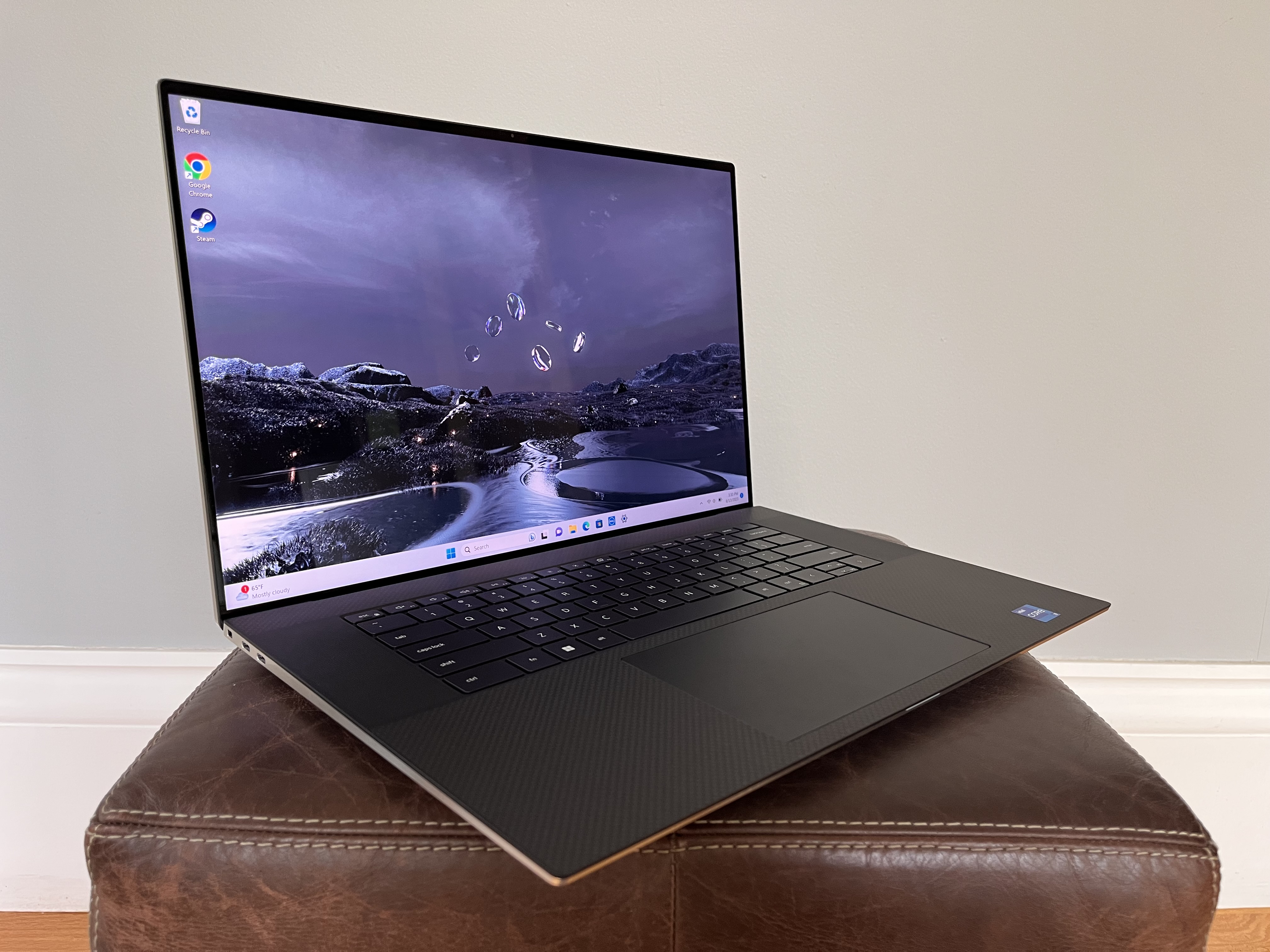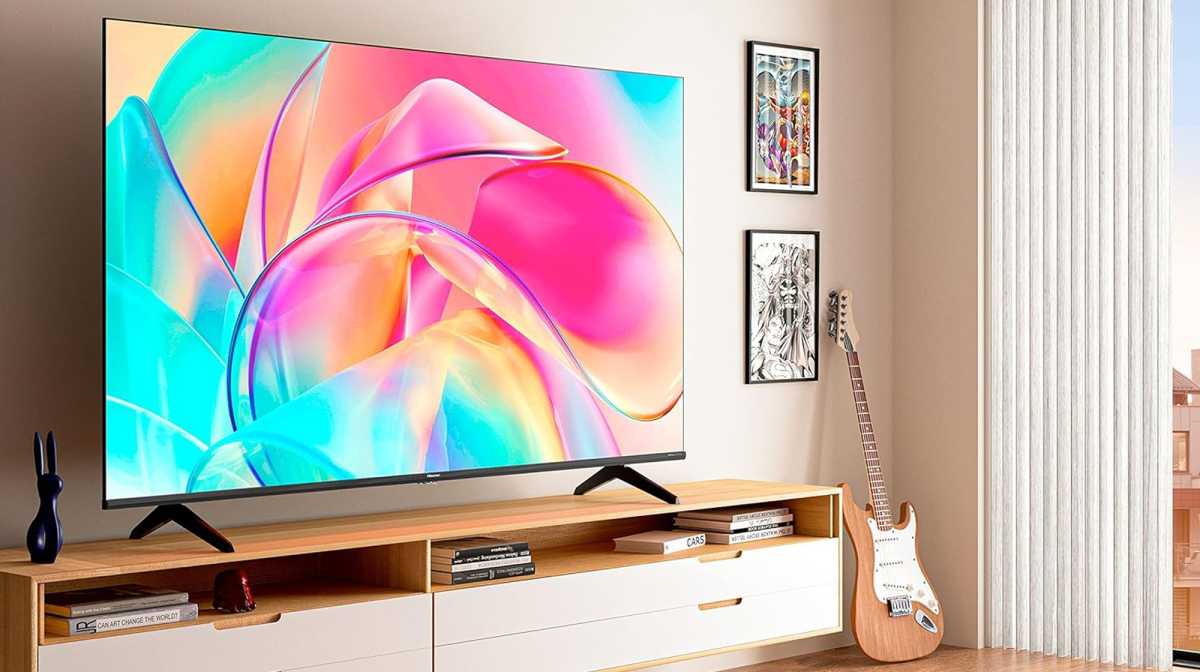
 Image: IDG / Chris Hoffman
Image: IDG / Chris Hoffman
Walk into an electronics store and you’ll find it almost impossible to find a TV that isn’t sporting a 4K display. While the TV market will practically beat you over the head with its 4K marketing, the laptop industry has been slower to adopt 4K displays, with a good many laptops — including high-end models — sticking to lower resolutions. But if 4K is so good for TVs, it stands to reason that it should be great for laptop displays too, right? Let’s dig in and explore what benefit a 4K display might provide on a laptop and what realities might keep it from being the wisest choice.
Further reading: Best laptops 2024: Premium, budget, gaming, 2-in-1s, and more
How sharp is sharp enough?
The human eye can see a lot of detail, and it’s no fun looking at a display that plainly shows each pixel such that every image looks like a NES-era video game. But at what point can we say an image is sharp enough?

Thomas Armbrüster
Thomas Armbrüster
Thomas Armbrüster
Apple had a scheme for this when it introduced its Retina display branding. This was made to present displays that were sharp enough for the viewing distances they were likely to be used at. After all, you might be able to see individual pixels on any display if you put your eyeballs right next to them, but you won’t be able to make out individual pixels on almost any display if you’re 100 feet away — you just also might not be able to see any of the pixels.
Ultimately, it becomes a balancing act. Where 1080p might do for a 7-inch screen held 12 inches away from your eyes, it won’t do for a 75-inch TV set a few feet in front of you.
For a laptop, you’ll want to be roughly an arm’s length away from your display, though there’s a little wiggle room for folks who like to lean in or sit back. This online calculator for optimal viewing distances suggests that a 17-inch screen with a 4K resolution would be best viewed from a little over 13 inches away, which is sitting pretty darn close to the screen. That measure gets even closer as you shrink the display down to more common laptop sizes like 15.6 or 14 inches. Beyond that viewing distance, the screen will just look sharp but not necessarily offer any noticeable improvement over a lower resolution.
Where this becomes even more interesting is where two displays with different resolutions become effectively equal. That 17-inch, 4K display would look just as sharp as a 17-inch, 1080p display if you were more than 26.5 inches away. If it were a 1440p display, sitting just 19.9 inches away would make it effectively equal to the 4K display. And these are not unlikely viewing distances for a laptop display, though that 1080p screen might be pushing it.
Check out our top laptop pick for video editing
Dell XPS 17 9730
 Read our reviewPrice When Reviewed:From $2,449 | Model reviewed $3,099Best Prices Today:$2199 at Dell | $2899.99 at Best Buy
Read our reviewPrice When Reviewed:From $2,449 | Model reviewed $3,099Best Prices Today:$2199 at Dell | $2899.99 at Best Buy
All of these measures are on a 17-inch display and still don’t give 4K much room to stand apart from lower resolutions. Given that 16-inch, 15.6-inch, 14-inch, and 13-inch displays are more common, that 4K resolution gets even less breathing room. Unless you are constantly leaning to pixel peep, 4K is unlikely to make a big difference on your laptop.
There are some downsides to going for 4K
Even if you can’t always see the difference, 4K is objectively better than 1440p or 1080p, so maybe it’s worth it on that alone? Of course, it couldn’t be that simple.
4K displays on laptops are still not very common, and tend to come with a considerable uptick in price. HP’s Envy 17t, for instance, offers both 1080p and 4K configurations for its display, and the 4K option bumps the price up by $220, which is more than a 17 percent uplift. And since 4K displays are so uncommon on laptops, you’d be limiting yourself to a smaller pool of options to get one, thereby missing out on a lot of the best laptops.
Your laptop also has to do work to render pixels. The more pixels there are, the more work it has to do. That’s not such a big deal for a desktop PC just trying to display the Windows desktop at 4K, but laptops need to balance their efforts with their battery life. And a 4K display will call for more of that battery than a similar 1080p display. If there’s little visual benefit, it’s probably not worth sacrificing battery for it.
And let’s not forget all the things you won’t even get to experience in 4K on your laptop. It’s great on TVs and projectors because streaming services will generally allow for 4K video to go to those. But you’ll find that Netflix, Prime Video, and the like really give Windows the cold shoulder when it comes to providing the same stream quality they send to TVs. All a 4K resolution will do for you when viewing lower resolution content is show you that much more clearly that you’re not getting the fidelity you want.

PCWelt/Hisense
PCWelt/Hisense
PCWelt/Hisense
Save 4K for the big screen
Unless you’re doing professional graphic design with the goal of creating professional prints at high DPI, there’s little reason to go for a 4K laptop. They’re not very common option and for good reason. Even at the largest screen sizes of laptops, they provide little tangible benefit, and they come with added cost and drawbacks.
Author: Mark Knapp

Recent stories by Mark Knapp:
Can $500 get you a good gaming laptop?Dell XPS 13 (2024) review: An elegant stumbleAre OLED laptops worth the extra price?



